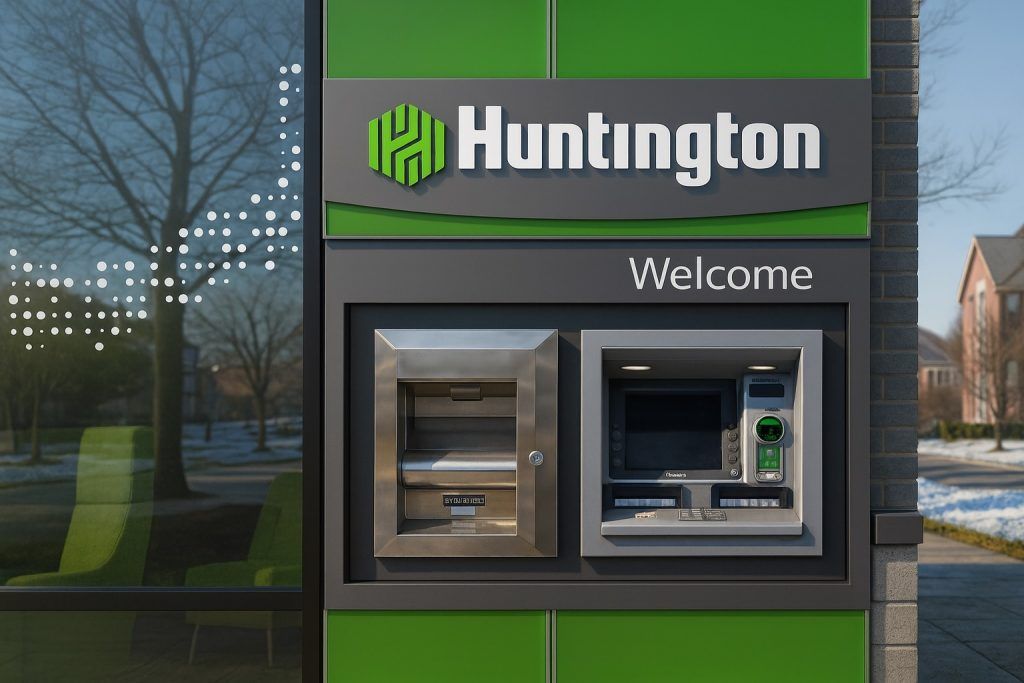- Shares jump on earnings beat: Ally Financial (NYSE: ALLY) stock spiked roughly 6.6% in pre-market trading to about $40.99 on Oct. 17, 2025, after a strong quarterly report [1]. The bank’s stock traded ~3–5% higher by midday Friday as investors cheered the results.
- Q3 profit doubles YoY:Third-quarter net income leapt to $371 million (EPS $1.18) from $171 million (EPS $0.55) a year earlier [2]. Adjusted EPS of $1.15 beat Wall Street’s $1.01 forecast by ~14%, aided by a $230 million year-over-year drop in credit loss provisions [3] [4]. Revenue of $2.17 billion grew ~3% YoY, slightly above estimates [5].
- Credit quality improves: Loan losses are moderating. “Importantly, credit is improving at an accelerating pace,” noted Truist analyst Brian Foran [6]. Ally’s provision for bad loans fell sharply, reflecting healthier consumer finances and effective risk management.
- Analysts upbeat – $45 target:12 of 20 analysts now rate ALLY a “Buy” (the rest “Hold”), with a median price target of ~$45 per share [7]. Recent calls show mixed tweaks – e.g. JPMorgan trimmed its target to $42, while Morgan Stanley raised theirs to $52 ahead of earnings [8]. The consensus implies moderate upside from current levels.
- Stock outlook and forecast: Wall Street expects solid performance to continue. Q4 2025 earnings are forecast around $1.04 per share on $2.20B revenue [9], and full-year 2025 EPS around $3.68 [10]. With credit trends improving and interest rates potentially easing, analysts see room for Ally to build on its gains into 2026.
- Market context: Ally’s results arrived as bank stocks rebounded from a steep selloff. Just a day prior, regional bank shares plunged ~6% on credit jitters [11]. Ally’s robust report – showing continued strong demand for auto loans and resilient lower-income consumers [12] – helped calm those broader fears. The Fed’s recent pivot to rate cuts (first cut in late September) and expectations of another trim in October have also eased bond yields (~4.1% 10‑yr) [13] [14], improving sentiment for lenders.
- Comparing peers: Year-to-date, ALLY stock is up ~6.8% [15] – a modest rise lagging the S&P 500’s ~18% rally [16] and some peers. Capital One shares, for example, surged 35%+ in the past year, outperforming Ally [17], as investors favored its credit card growth. Meanwhile, fintech rival SoFi has skyrocketed over 200% in 2025 [18] amid rapid expansion, highlighting how digital finance plays have far outpaced traditional banks. Ally’s steadier climb reflects its more conservative profile and earlier pressure from high interest rates.
Strong Q3 Earnings Fuel Rally
Ally Financial delivered an upside surprise in Q3 2025, powering a relief rally in its stock. The Detroit-based digital bank – a major auto lender and online banking provider – reported third-quarter earnings on October 17 that handily beat expectations. Net income more than doubled year-over-year, rising to $371 million (GAAP EPS $1.18) versus $171 million (EPS $0.55) in Q3 2024 [19]. On an adjusted basis, earnings were $1.15 per share, about 14% above analyst consensus of ~$1.01 [20]. Revenue came in at $2.17 billion, up ~3% from a year ago and slightly ahead of forecasts around $2.11B [21].
This strong performance was driven by improved profit margins and credit trends. Ally’s bottom-line beat “substantially exceeded” expectations [22], which “is particularly notable, indicating effective cost management or more favorable credit conditions than had been anticipated” [23]. In fact, the bank’s provision for credit losses – money set aside for bad loans – shrank by $230 million compared to last year [24]. Lower credit costs boosted profitability, offsetting only modest revenue growth. Interest income remained healthy thanks to high loan yields, while deposit costs were managed to preserve margins.
Investors reacted with enthusiasm. Ally’s stock jumped in pre-market trading by about 6%, and by mid-session Oct. 17 shares were still up roughly 4–5% around the $40 level. This reversed a month-long slide – in the month leading up to earnings, ALLY had fallen nearly 14% [25] amid broader financial sector weakness. The Q3 beat clearly “renewed investor confidence”, sparking a relief rally [26]. As of Friday’s close, Ally’s stock is hovering in the high-$30s, up modestly year-to-date and now rebounding off its recent lows.
Improving Credit Quality Eases Fears
A key highlight from Ally’s report was marked improvement in credit quality. After over a year of elevated loan loss provisions (reflecting economic uncertainty and higher interest costs for borrowers), Ally signaled that its consumers are holding up better than expected. The bank’s provision for loan losses was considerably lower than a year ago, which directly boosted quarterly profit [27]. Auto loan delinquencies and defaults – a focal point for analysts – showed signs of stabilization, according to the earnings release (exact figures were not immediately cited, but the drop in provisions speaks volumes).
Analysts seized on the positive credit trend. “Importantly, credit is improving at an accelerating pace,” observed Brian Foran, banking analyst at Truist Securities [28]. This suggests that fewer consumers are falling behind on payments, and Ally needed to reserve less for potential defaults. Foran’s comment underscores that not only are conditions improving, but they’re doing so faster than earlier in the year – an encouraging signal for the quarters ahead.
This brightening credit picture comes amid broader market anxiety about consumer debt. In fact, Ally’s report arrived just after a rough day for bank stocks. On Thursday, Oct. 16, U.S. regional banks plunged (the S&P Regional Banks index sank ~6.3%) on renewed “heightened concerns about credit quality.” [29] News of a large fraud loss at another regional lender and worries about higher-for-longer interest rates had spooked the sector. Ally’s results helped turn the tide. By showing “continued demand for car loans, allaying some worries about the health of lower-income consumers” [30], Ally eased investors’ worst fears. In other words, American consumers – especially the subprime and middle-income car buyers that Ally often serves – are still managing to borrow and repay loans despite economic headwinds.
The contrast was striking: one day markets fretted that banks would see credit losses surge; the next day Ally reported improving metrics and sound underwriting. This dynamic helped lift not just Ally’s stock but also peers. “Results come as a rout in U.S. regional banking shares on Thursday amid heightened concerns about credit quality,” Reuters noted, implying Ally’s good news provided a much-needed reality check [31]. The bank’s CEO (who spoke on an earnings call) likely emphasized conservative lending standards and strong recovery efforts on delinquent accounts, further reassuring analysts.
Analyst Reactions: Price Targets Point to Upside
Wall Street analysts responded favorably to Ally’s latest earnings, citing the earnings beat and credit trend as signs of undervaluation. According to Refinitiv data, 12 out of 20 brokerages now rate ALLY stock a “Buy” (or equivalent), with the remaining 8 at “Hold” and no “Sell” ratings [32]. The median 12-month price target now stands around $45 [33], implying roughly 15% upside from current prices in the high-$30s. In short, the consensus is that Ally stock has room to run higher over the next year.
Several top-rated analysts updated their forecasts in recent weeks. Notably, JPMorgan’s Richard Shane reaffirmed an Overweight rating but trimmed his target from $45 to $42 on Oct. 7 [34], perhaps reflecting caution on funding costs. By contrast, Morgan Stanley’s Betsy Graseck boosted her target from $47 to $52 (Overweight) in late September [35], anticipating stronger earnings power. And in a bullish outlier, Citigroup’s Keith Horowitz in mid-September reiterated a Buy and raised his target all the way from $59 to $70 [36], expressing confidence that Ally’s valuation could re-rate much higher if economic conditions stay benign. Most price objectives cluster in the mid-$40s, but the range is wide – reflecting different views on the trajectory of interest rates, loan growth and competition.
Near-term forecasts also remain positive. The current consensus for Q4 2025 is about $1.04 EPS on $2.20 billion in revenue [37], which would represent modest growth versus the prior year’s quarter. For the full-year 2025, analysts predict around $3.68 in earnings per share [38], up sharply from 2024’s levels. If achieved, that would put Ally’s P/E ratio near 10x at the current stock price – an undemanding valuation if the company can deliver even low-to-mid single-digit growth going forward. Many analysts highlight that Ally trades below its tangible book value per share (~$39), suggesting limited downside barring a severe downturn. With capital levels solid and a 3%+ dividend yield, the risk/reward appears attractive, in the view of bulls.
To be sure, not everyone is pounding the table. Some analysts remain in “hold” camp, wary of lingering risks: a potential uptick in unemployment could yet drive loan defaults higher, or competitive pressures on deposit rates could crimp Ally’s margins. But overall, the tone on Wall Street has improved following the Q3 report. Price target consensus in the mid-$40s signals that experts see further upside, even if perhaps not a runaway rally. Much will depend on whether Ally can sustain earnings momentum into 2026 and whether management deploys excess capital (via buybacks or growth investments) to boost shareholder returns.
Broader Trends: Fed Easing, Market Rally and Rate Impact
Ally’s fortunes are tightly linked to the broader economic and market trends in late 2025. One major tailwind now emerging: the Federal Reserve’s shift from raising rates to cutting rates. After an aggressive hiking cycle in 2022–2024, the Fed finally delivered its first interest rate cut of 2025 in late September, and markets widely expect another 0.25% rate reduction at the upcoming Oct. 28–29 Fed meeting [39]. This pivot toward easier monetary policy has begun to relieve pressure on bond yields – the benchmark 10-year Treasury yield recently eased to ~4.1%, down from around 5% earlier in the fall [40]. For banks like Ally, lower yields can be a mixed blessing: they may compress asset yields over time, but they also make it less costly to attract deposits and signal confidence that the Fed is managing a “soft landing” for the economy.
So far, the stock market is cheering the Fed’s more dovish stance. The S&P 500 index is up roughly 16–18% in 2025 [41] [42], and the Nasdaq even more, fueled by a tech rally. Financial stocks have participated, but to a lesser extent. Ally’s ~6-7% year-to-date rise [43] notably trails the broader market – a gap that widened during the spring regional bank turmoil and as rising interest rates earlier this year raised funding costs. Now, with rates potentially coming down and no recession in sight, investors are rotating back into select financials. “Interest rates are now falling – a recipe for extended stock gains,” one strategist noted of the current environment [44]. If the Fed indeed gently lowers rates into 2026, it could spur loan demand (e.g. more car buyers can afford financing) and reduce deposit competition, helping Ally’s net interest margins.
However, broader trends also include competitive and consumer dynamics. On the competitive front, fintech and alternative lenders are booming in 2025, forcing traditional players to adapt. For instance, SoFi Technologies – a digital-first finance company – has seen its stock skyrocket over 220% year-over-year as of early October [45] thanks to rapid growth in its “financial super-app” model. SoFi’s surge (and seven consecutive profitable quarters) showcases investor enthusiasm for fintech innovation, far outpacing Ally’s performance. While Ally has a robust online bank and auto finance franchise, it faces pressure to innovate. The company has rolled out initiatives like an AI-driven platform (“Ally.ai”) and expanded digital brokerage services to keep pace with evolving consumer expectations.
Within the traditional banking sphere, Ally also contends with heavyweights and niche players. Capital One Financial, another big auto lender and credit card issuer, has enjoyed a strong year – its stock climbed over 35% in the past 12 months [46], handily beating Ally, as Capital One benefited from credit card spending resilience and a perceived lower risk profile in its loan book. Other consumer lenders like OneMain Holdings (OMF) and credit card banks (e.g. Discover Financial) have had mixed outcomes, with stock performances generally below the S&P 500 but above regional bank averages. The key differentiator has been credit outlook: firms that convinced investors they can navigate a potential uptick in delinquencies have been rewarded. In Ally’s case, the Q3 report goes a long way to bolster that confidence.
On the consumer side, U.S. households remain a wildcard. Thus far in 2025, consumer spending has been fairly resilient (helping Ally’s auto finance volumes), and the labor market – while cooling – is still solid. But higher borrowing costs earlier this year and inflation have pinched some budgets. Used car prices, a factor for auto lenders, have been volatile but off their peaks, which could affect loan recovery values. Ally executives noted no severe deterioration in their auto loan portfolio this quarter, which is reassuring. The broader economy’s “Goldilocks” scenario (moderate growth with cooling inflation) has largely played out, supporting both borrowers and lenders [47]. If that continues into 2026, Ally could see a sweet spot of decent loan demand, improving credit, and eventually refinancing opportunities for borrowers as rates drop – all positives for business.
Outlook: Cautious Optimism Ahead
Looking ahead, Ally Financial enters the final stretch of 2025 with momentum and cautious optimism. The strong Q3 results have set a firmer foundation: the bank proved it can thrive even in a higher-rate climate, and that credit risks – while always present – are manageable. Near-term, analysts expect Ally’s EPS to grow in the mid-single digits, and consensus projections for 2026 call for further earnings gains in the high-single digits (though these could be revised as the macro backdrop evolves). Management has not provided formal guidance beyond the current year, but they have indicated priorities of disciplined loan growth (focusing on prime and super-prime auto loans), building out fee businesses like wealth management, and maintaining capital returns to shareholders.
One such shareholder return is the dividend – Ally’s board declared its regular $0.30 quarterly dividend in early October [48], indicating confidence in the bank’s capital position. The dividend yields around 3.1% annually at the current share price, providing income support for investors. Ally paused share repurchases in 2023 amid regulatory uncertainty, but with credit fears abating, there’s speculation buybacks could resume in 2026 if capital levels exceed targets.
Most experts maintain a positive near-term outlook on Ally stock, albeit with measured expectations. The median ~$45 price target [49] implies the stock could reclaim its 2023 highs within a few months. Bullish analysts argue that even at $45, Ally would trade at a reasonable ~1.1 times tangible book value – still below many peers – and under 12x forward earnings, leaving room for further appreciation if economic conditions stay benign. Upside scenarios (like Citi’s $70 bull-case target) would likely require either a takeover bid or a surprisingly strong consumer boom that drives earnings far above forecast. Downside risks include a resurgence of inflation prompting the Fed to halt rate cuts, or an economic slowdown that hits auto loan performance.
For now, though, the trajectory appears favorable. As one market commentator summed up, “Investors who have held their nerve are cleaning up” in 2025’s rally [50] – and Ally’s rebound after earnings shows how quickly sentiment can improve when fears prove overdone. The company has navigated a tricky environment of rising rates and industry turmoil, and emerged with solid results. If credit trends continue improving and the Fed’s policy turn goes as planned, Ally Financial could well find itself on a smoother road ahead. Both the latest earnings and the broader market signals point to brighter days for ALLY stock, keeping it firmly on investors’ radar going into the new year.
Sources: Ally Financial Q3 2025 Earnings Release (Oct. 17, 2025) [51] [52]; Reuters (TradingView) market brief [53] [54]; Bloomberg News [55]; ChartMill analysis [56] [57]; Benzinga analyst roundup [58]; ts2.tech market commentary [59] [60].
References
1. www.tradingview.com, 2. www.nasdaq.com, 3. www.tradingview.com, 4. www.chartmill.com, 5. www.chartmill.com, 6. www.tradingview.com, 7. www.tradingview.com, 8. www.benzinga.com, 9. www.chartmill.com, 10. www.chartmill.com, 11. news.bloombergtax.com, 12. news.bloombergtax.com, 13. ts2.tech, 14. ts2.tech, 15. www.tradingview.com, 16. ts2.tech, 17. finance.yahoo.com, 18. ts2.tech, 19. www.nasdaq.com, 20. www.chartmill.com, 21. www.chartmill.com, 22. www.chartmill.com, 23. www.chartmill.com, 24. www.tradingview.com, 25. www.chartmill.com, 26. www.chartmill.com, 27. www.tradingview.com, 28. www.tradingview.com, 29. www.tradingview.com, 30. news.bloombergtax.com, 31. www.tradingview.com, 32. www.tradingview.com, 33. www.tradingview.com, 34. www.benzinga.com, 35. www.benzinga.com, 36. www.benzinga.com, 37. www.chartmill.com, 38. www.chartmill.com, 39. ts2.tech, 40. ts2.tech, 41. ts2.tech, 42. ts2.tech, 43. www.tradingview.com, 44. ts2.tech, 45. ts2.tech, 46. finance.yahoo.com, 47. ts2.tech, 48. media.ally.com, 49. www.tradingview.com, 50. ts2.tech, 51. www.nasdaq.com, 52. www.chartmill.com, 53. www.tradingview.com, 54. www.tradingview.com, 55. news.bloombergtax.com, 56. www.chartmill.com, 57. www.chartmill.com, 58. www.benzinga.com, 59. ts2.tech, 60. ts2.tech








